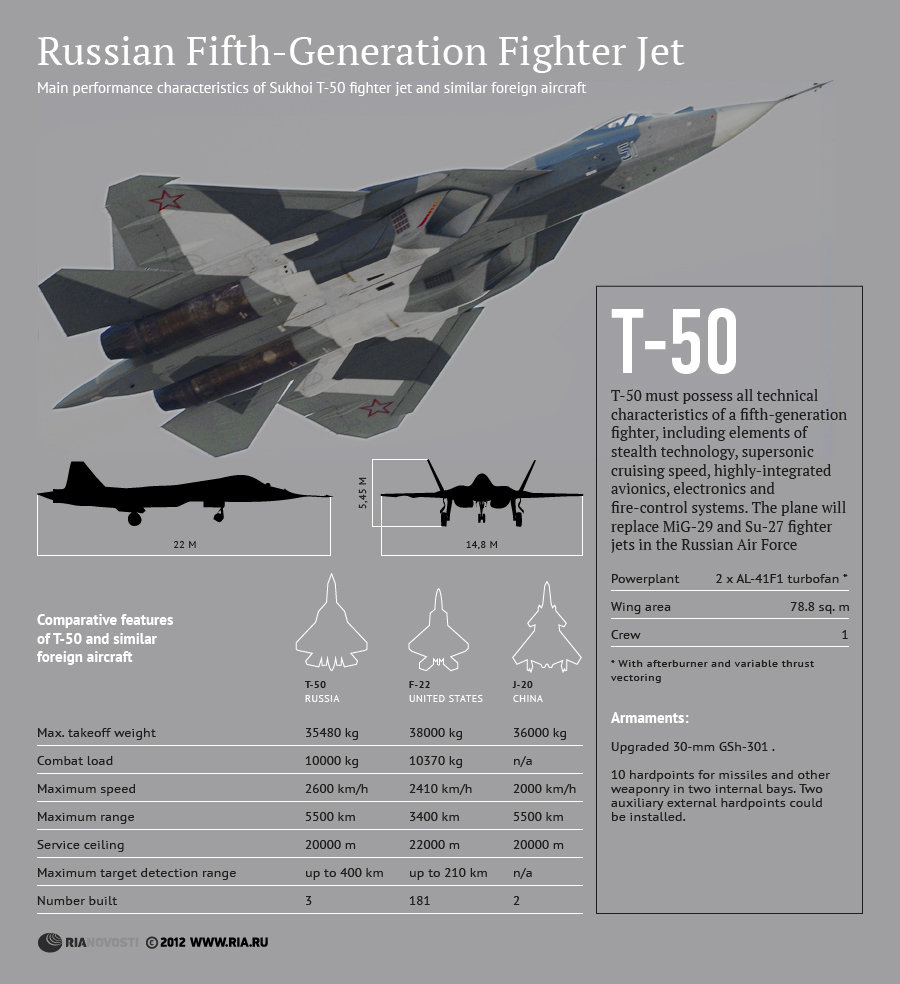With the U.S. F-35 Joint Strike Fighter still in limbo over reliability problems, Russian President Vladimir Putin’s administration on Monday said it would begin regular production of its newest fighter jet, the T-50, next year.
According to state-run media, the Russian military will begin mass-producing the advanced fighter jet in several versions, and will also begin making models that will be available for export.
“We have plans to deliver the first series of fifth-generation fighter jets next year,” said Deputy Defense Minister Yuri Borisov, after visiting a plant owned by Sukhoi, the Russian defense contractor responsible for the new plane, which is also known as the PAK-FA.
Related: The EU’s New War Against Putin’s Propaganda Campaign
The “fifth generation” of fighter jets to which Borisov refers is a category of the very newest military aircraft in the world. To date, the only true fifth generation fighter in operation is the U.S. F-22, a wildly expensive and not terribly reliable plane that Congress agreed to stop funding in 2009. The last F-22 was built in 2011, giving the U.S. Air Force an inventory of 187.
One of the reasons Congress and the Pentagon agreed to eliminate the F-22 was that the F-35 was in the pipeline. The joint strike fighter was supposed to be cheaper to produce and operationally superior to the F-22. To date, it has been neither.
The F-35 has consumed some $400 billion in resources, about $170 billion more than was originally projected, and the prototypes that have been produced have failed to meet the necessary performance standards. A scathing report from the Department of Defense’s Director of Operational Test and Evaluation cited a laundry list of flaws and shortcomings, from vulnerability to engine fires to computer malfunctions.
Related: How to Build a $400 Billion F-35 That Doesn’t Fly
Experts estimate that the F-35 remains years away from deployment in a combat situation, despite assurances to the contrary from the Pentagon.
At the moment, that isn’t a major security issue. The F-22, for all its problems, is currently without real competition in the battle for the skies. However, if the Russian T-50 is true to its specification, that could change in the not-too-distant future.

The T-50 is significantly faster than the F-22, and has a huge advantage in terms of range – 5,500 kilometers compared to the F-22’s 3,400. The T-50’s detection systems allow it to spot incoming threats at a distance of up to 400 kilometers, compared to the F-22’s 210 km.
Most experts believe that the F-35 would be the dominant plane, should it ever come on line in the form its supporters have promised. But a continuous delay in production leaves Russia with the most dominant fighter jet on the planet.
Related: Putin Wants to Create His Own Version of the Euro
There are some caveats, of course. It is unclear how many planes Russia could realistically expect to produce, given Putin’s push to increase investment in the Russian military. Whether or not Russia’s reported success in trials is wholly accurate is also in dispute. In 2013, the Indian Air Force was given the opportunity to test a prototype, and came away unimpressed, saying that the T-50 hadn’t lived up to the hype. But a lot can happen in two years.
Top Reads from The Fiscal Times





